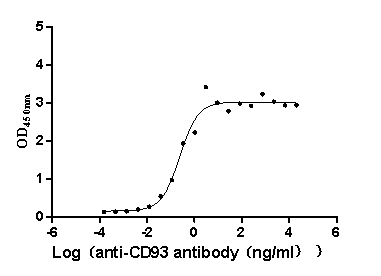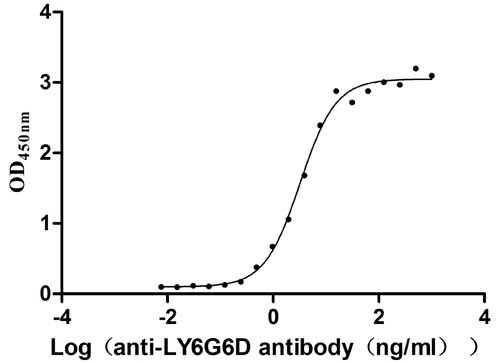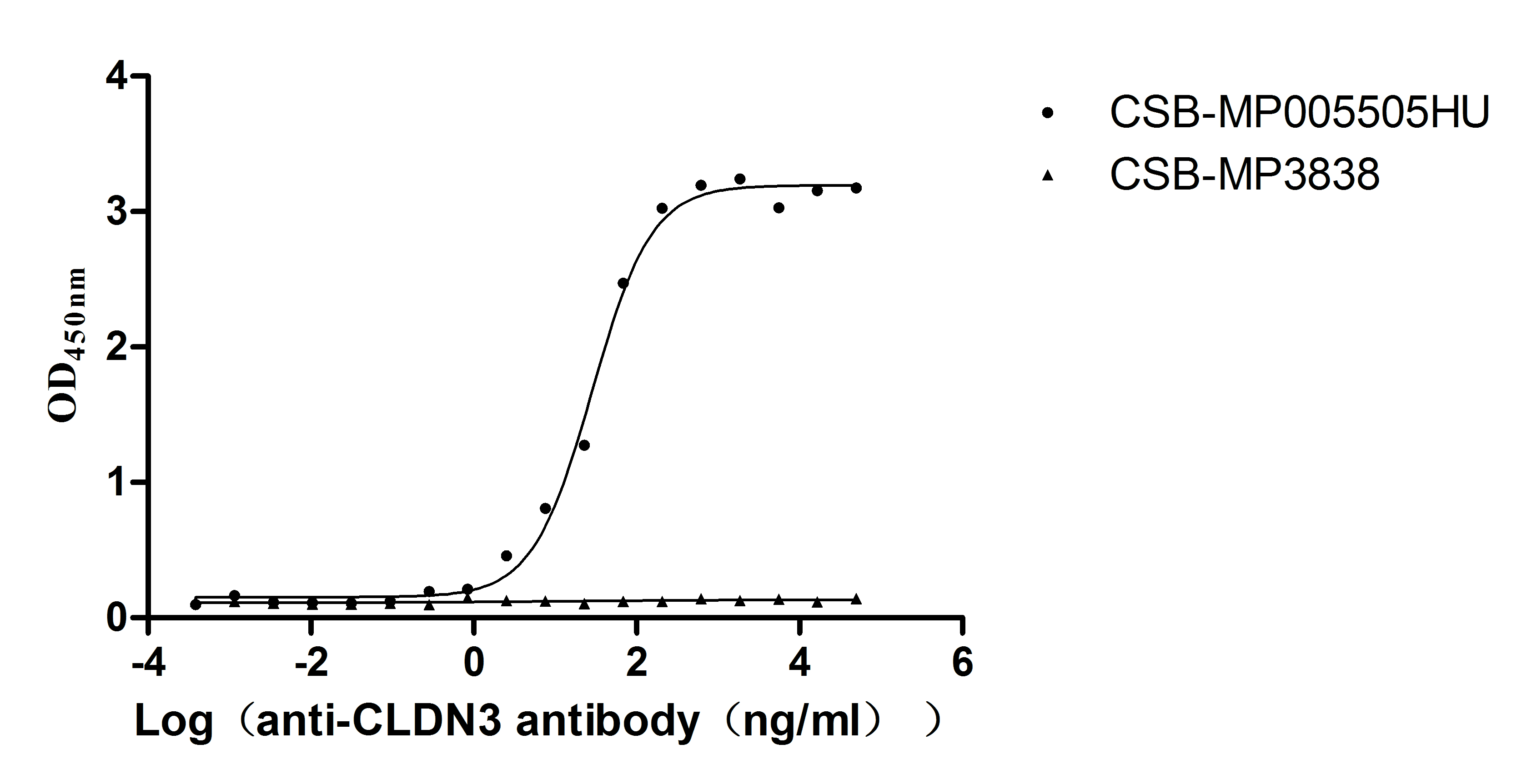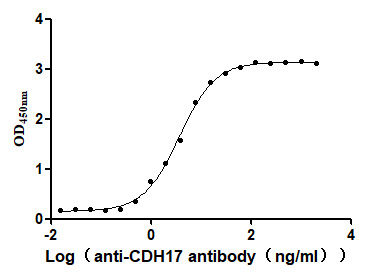Recombinant Rat Guanine nucleotide-binding protein G (t) subunit alpha-3 (Gnat3)
-
中文名稱:大鼠Gnat3重組蛋白
-
貨號(hào):CSB-YP009600RA
-
規(guī)格:
-
來源:Yeast
-
其他:
-
中文名稱:大鼠Gnat3重組蛋白
-
貨號(hào):CSB-EP009600RA
-
規(guī)格:
-
來源:E.coli
-
其他:
-
中文名稱:大鼠Gnat3重組蛋白
-
貨號(hào):CSB-EP009600RA-B
-
規(guī)格:
-
來源:E.coli
-
共軛:Avi-tag Biotinylated
E. coli biotin ligase (BirA) is highly specific in covalently attaching biotin to the 15 amino acid AviTag peptide. This recombinant protein was biotinylated in vivo by AviTag-BirA technology, which method is BriA catalyzes amide linkage between the biotin and the specific lysine of the AviTag.
-
其他:
-
中文名稱:大鼠Gnat3重組蛋白
-
貨號(hào):CSB-BP009600RA
-
規(guī)格:
-
來源:Baculovirus
-
其他:
-
中文名稱:大鼠Gnat3重組蛋白
-
貨號(hào):CSB-MP009600RA
-
規(guī)格:
-
來源:Mammalian cell
-
其他:
產(chǎn)品詳情
-
純度:>85% (SDS-PAGE)
-
基因名:Gnat3
-
Uniprot No.:
-
別名:Gnat3; Gnat-3Guanine nucleotide-binding protein G(t) subunit alpha-3; Gustducin alpha-3 chain
-
種屬:Rattus norvegicus (Rat)
-
蛋白長(zhǎng)度:Full Length of Mature Protein
-
表達(dá)區(qū)域:2-354
-
氨基酸序列GSGISSESK ESAKRSKELE KKLQEDAERD ARTVKLLLLG AGESGKSTIV KQMKIIHKNG YSKQECMEFK AVVYSNTLQS ILAIVKAMTT LGIDYVNPRS REDQQLLLSM ANTLEDGDMT PQLAEIIKRL WGDPGIQACF ERASEYQLND SAAYYLNDLD RLTAPGYVPN EQDVLHSRVK TTGIIETQFS FKDLNFRMFD VGGQRSERKK WIHCFEGVTC IIFCAALSAY DMVLVEDEEV NRMHESLHLF NSICNHKYFA TTSIVLFLNK KDLFQEKVTK VHLSICFPEY TGPNTFEDAG NYIKNQFLDL NLKKEDKEIY SHMTCATDTQ NVKFVFDAVT DIIIKENLKD CGLF
-
蛋白標(biāo)簽:Tag?type?will?be?determined?during?the?manufacturing?process.
The tag type will be determined during production process. If you have specified tag type, please tell us and we will develop the specified tag preferentially. -
產(chǎn)品提供形式:Lyophilized powder
Note: We will preferentially ship the format that we have in stock, however, if you have any special requirement for the format, please remark your requirement when placing the order, we will prepare according to your demand. -
復(fù)溶:We recommend that this vial be briefly centrifuged prior to opening to bring the contents to the bottom. Please reconstitute protein in deionized sterile water to a concentration of 0.1-1.0 mg/mL.We recommend to add 5-50% of glycerol (final concentration) and aliquot for long-term storage at -20℃/-80℃. Our default final concentration of glycerol is 50%. Customers could use it as reference.
-
儲(chǔ)存條件:Store at -20°C/-80°C upon receipt, aliquoting is necessary for mutiple use. Avoid repeated freeze-thaw cycles.
-
保質(zhì)期:The shelf life is related to many factors, storage state, buffer ingredients, storage temperature and the stability of the protein itself.
Generally, the shelf life of liquid form is 6 months at -20°C/-80°C. The shelf life of lyophilized form is 12 months at -20°C/-80°C. -
貨期:Delivery time may differ from different purchasing way or location, please kindly consult your local distributors for specific delivery time.Note: All of our proteins are default shipped with normal blue ice packs, if you request to ship with dry ice, please communicate with us in advance and extra fees will be charged.
-
注意事項(xiàng):Repeated freezing and thawing is not recommended. Store working aliquots at 4°C for up to one week.
-
Datasheet :Please contact us to get it.
問答及客戶評(píng)論
Can you provide a smaller amount for this product. We would like to validate this product in our researcher model system.
靶點(diǎn)詳情
-
功能:Guanine nucleotide-binding protein (G protein) alpha subunit playing a prominent role in bitter and sweet taste transduction as well as in umami (monosodium glutamate, monopotassium glutamate, and inosine monophosphate) taste transduction. Transduction by this alpha subunit involves coupling of specific cell-surface receptors with a cGMP-phosphodiesterase; Activation of phosphodiesterase lowers intracellular levels of cAMP and cGMP which may open a cyclic nucleotide-suppressible cation channel leading to influx of calcium, ultimately leading to release of neurotransmitter. Indeed, denatonium and strychnine induce transient reduction in cAMP and cGMP in taste tissue, whereas this decrease is inhibited by GNAT3 antibody. Gustducin heterotrimer transduces response to bitter and sweet compounds via regulation of phosphodiesterase for alpha subunit, as well as via activation of phospholipase C for beta and gamma subunits, with ultimate increase inositol trisphosphate and increase of intracellular Calcium. GNAT3 can functionally couple to taste receptors to transmit intracellular signal: receptor heterodimer TAS1R2/TAS1R3 senses sweetness and TAS1R1/TAS1R3 transduces umami taste, whereas the T2R family GPCRs act as bitter sensors. Functions also as lumenal sugar sensors in the gut to control the expression of the Na+-glucose transporter SGLT1 in response to dietaty sugar, as well as the secretion of Glucagon-like peptide-1, GLP-1 and glucose-dependent insulinotropic polypeptide, GIP. Thus, may modulate the gut capacity to absorb sugars, with implications for the prevention and treatment of malabsorption syndromes and diet-related disorders including diabetes and obesity.
-
基因功能參考文獻(xiàn):
- The staining protocols, especially the fixation time, cause discrepancies in gustducin immunoreactivities. PMID: 21566335
- Co-expression patterns of the neuropeptides vasoactive intestinal peptide and cholecystokinin with the transduction molecules alpha-gustducin and T1R2 in rat taste receptor cells PMID: 15561439
- Axonemal-associated localization within the midpiece and principal piece of rat spermatozoa raises the possibility that this G protein alpha-subunit may process intracellular signals controlling sperm motility. PMID: 17021831
- The data suggest that gustducin is involved in signal transduction of all the tastes of sweet, umami, and bitter in the soft palate, in contrast to its limited function in the tongue. PMID: 17566068
- Data show that the positive expression of alpha-gustducin (Gnat3 protein in diabetic rat taste bud cells is higher than that in normal controls as shown by both immunohistochemistry and RT-PCR. PMID: 18824257
顯示更多
收起更多
-
亞細(xì)胞定位:Cytoplasm. Note=Associated with microvilli, the presumed sites of sensory transduction in taste cells.
-
蛋白家族:G-alpha family, G(i/o/t/z) subfamily
-
組織特異性:Expressed in taste buds (sensory organs of clustered epithelial cells) of the circumvallate, foliate and fungiform papillae of the tongue, as well as in nasoincisor, palatal and epiglottal taste buds at protein level. Expressed in enteroendocrine of the g
-
數(shù)據(jù)庫鏈接:
Most popular with customers
-
Recombinant Human Tumor necrosis factor receptor superfamily member 5 (CD40), partial (Active)
Express system: Mammalian cell
Species: Homo sapiens (Human)
-
Recombinant Rabbit Tissue factor pathway inhibitor (TFPI) (Active)
Express system: Mammalian cell
Species: Oryctolagus cuniculus (Rabbit)
-
Recombinant Human Microtubule-associated protein tau (MAPT) (Active)
Express system: Mammalian cell
Species: Homo sapiens (Human)
-
Recombinant Macaca fascicularis CD93 molecule (CD93), partial (Active)
Express system: Mammalian cell
Species: Macaca fascicularis (Crab-eating macaque) (Cynomolgus monkey)
-
Recombinant Human Lymphocyte antigen 6 complex locus protein G6d (LY6G6D) (Active)
Express system: Yeast
Species: Homo sapiens (Human)
-
Recombinant Human Claudin-3 (CLDN3)-VLPs (Active)
Express system: Mammalian cell
Species: Homo sapiens (Human)
-
Recombinant Human Cadherin-17 (CDH17), partial (Active)
Express system: Mammalian cell
Species: Homo sapiens (Human)
-
Recombinant Human Killer cell immunoglobulin-like receptor 3DL2 (KIR3DL2), partial (Active)
Express system: Mammalian cell
Species: Homo sapiens (Human)


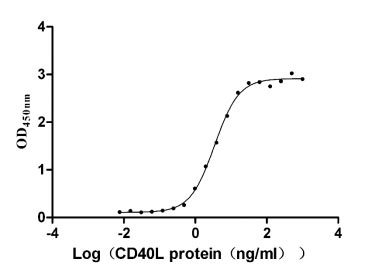
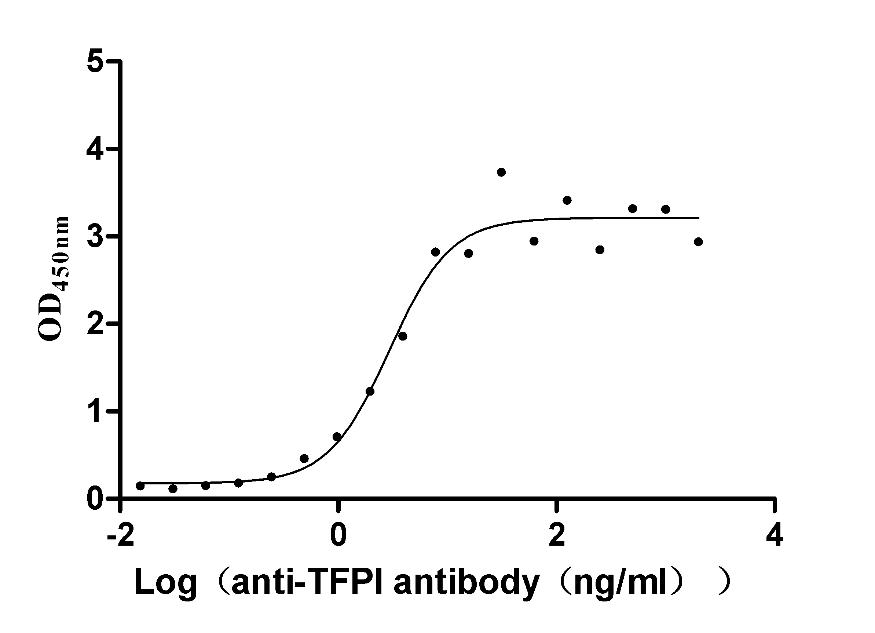
-AC1.jpg)
